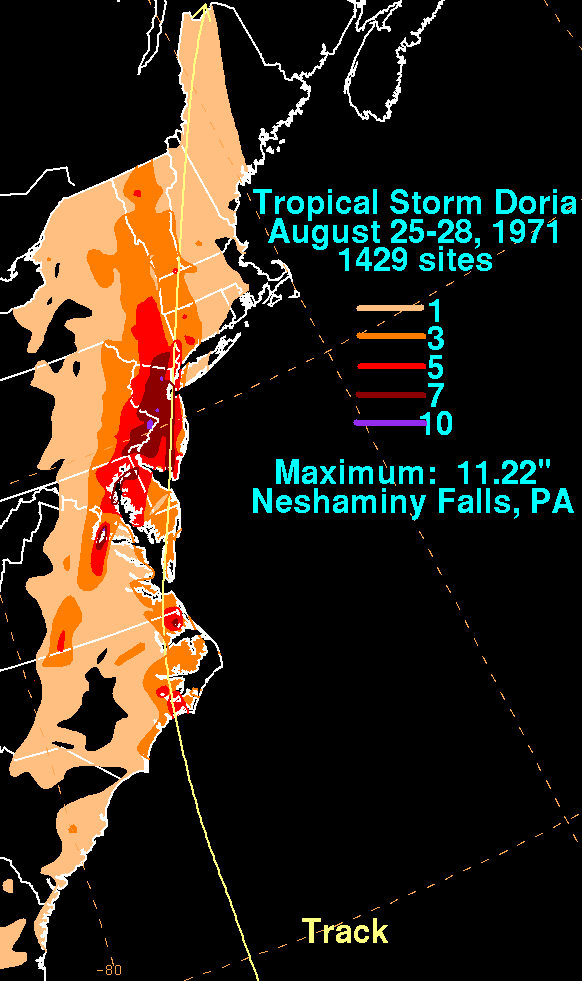Tropical Storm Doria, August 25-28, 1971
Overview
Doria developed from a tropical wave on August 20, 1971 to the east of the Lesser Antilles, and reached tropical storm status to the east of Florida on August 25. Doria turned to the north (Figure 1), east of Florida, and made landfall near Morehead City on August 27 with maximum sustained winds around 65 mph, with gusts to 69 mph reported at Atlantic Beach. Doria then turned to the northeast and moved through the mid-Atlantic states and New England as a tropical storm before becoming extratropical over Maine on August 29.
Impacts
In North Carolina, Doria produced localized flooding and minor wind damage. Tropical Storm Doria dropped 4.17 inches in Cape Hatteras, with over 5 inches of rain falling around the Albemarle Sound and near New Bern. In localized areas, the flooding caused severe damage to roads and houses and damaged water and sewage systems. Doria also produced storm tides of 2 feet above normal along the southern Outer Banks coast.
Further north, the storm spawned a tornado near Norfolk, Virginia, damaging twelve houses and downing hundreds of trees. Doria dropped heavy rainfall (Figure 2) in New Jersey, with as much as 10.29 inches in Little Falls, leading to record-breaking river levels and widespread flooding (Figure 3) across the state. Peak rainfall amounts of over 11 inches occurred in Pennsylvania. Moderate damage and heavy rainfall was also noted in New England and into southeastern Canada. Tropical Storm Doria caused seven deaths and almost $150 million dollars in damage ($860 million in 2015 dollars), making it the costliest storm of the 1971 Tropical Season.

Figure 1. Track of Tropical Storm Doria, August 20-29, 1971.

Figure 2. Rainfall graphic from Tropical Storm Doria, August 25-28, 1971 (Courtesy David Roth, Weather Prediction Center).

Figure 3. Major flooding in New Jersey from Tropical Storm Doria, August, 1971. (Photo courtesy Associated Press)